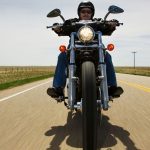
Escaping from a cold, wintery place to a warm climate can be fun for so-called “snowbirds” who migrate south for the winter. Still, experts say it’s a good idea for older adults to prepare by having a “medical checklist” to ensure both regular care and help in case of an emerging issue while away from home. “Snowbirds should have their medical checklists completed a month before they leave for their long-term destination,” said Isabel Valdez, an assistant professor of medicine at Baylor College of Medicine in Houston. “The No. 1 thing I recommend is to establish care with an additional primary care doctor at their long-term destination in the fall and winter who can coordinate with their home doctor,” she said in a college news release. Check with insurance providers or with friends and family who live at the destination to find a reputable primary care physician. Ensure that doctor will be able to communicate with the doctor back at home, Valdez suggested. If you’re going to need to have a checkup with a specialist during the time you’re gone, work with insurance providers to find one that’s covered. “Some medical conditions that require the care of a specialist may only require an appointment once or twice a year,” Valdez said. “You might only need to visit the specialist in your home state, but checking… read on > read on >



























-300x200.jpg)










